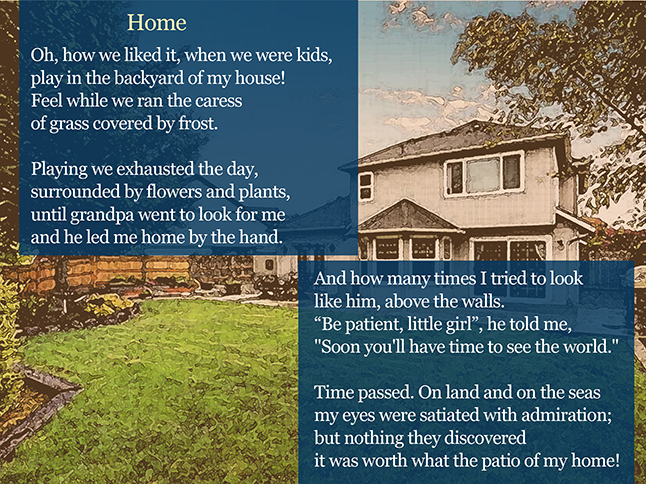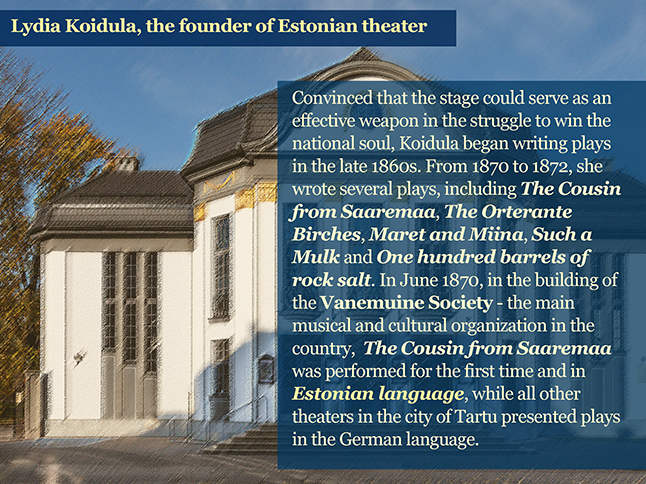The harsh reality of the Vietnam
War The Vietnam War was a conflict between North Vietnam and South Vietnam, in the period from 1959 to 1975. This conflict was motivated by ideological issues and had the intense participation of the American army from 1965 to 1973. It is estimated that between 1.5 million and 3 million people died during the war.
On April 30, 1975, Saigon, until then the capital of South Vietnam, was overthrown before the entry of communist forces from the north, marking the end of a nearly two-decade American military intervention in the Asian country. It was a humiliating moment for the most powerful country in the world. After the US left, the North invaded the South and unified the country. In honor of Ho Chi Minh City, who had already died before the end of the war, the government renamed Saigon to Ho Chi Minh Cityin 1975.
From a tumultuous journey from “boat people” to “the happiness gene”
In the spring of 1975, the war in Vietnam ended with the fall of Saigon, followed by an exodus by sea of one million Vietnamese refugees who were later called "boat people". To escape the repressive communist regime, her parents, she and two other siblings, fled by boat when she was ten years old.
After a stay in Malaysia they spent four months in a camp run by the United Nations High Commissioner for Refugees, before a Canadian delegation selected their parents for refugee status on account of their proficiency in the French language. In late 1979, Thúy and his family arrived in Granby, a city located in the province of Quebec.
Shortly afterward, his father was offered a job as manager of the Castel Hotel. This first welcome gesture and the unconditional support of her parents greatly influenced Kim Thúy's life. Her father passed on the “happiness gene” and her mother taught her to overcome her fears, giving her the right tools that transformed her into the strong, committed and passionate woman she is today.
Education and early career
In 1990, she obtained a bachelor's degree in linguistics and translation from the University of Montreal. In 1993, at the same university, she graduated with a law degree. She was also a seamstress, cashier, translator, interpreter, gastronomic commentator and restaurateur (person who professionally opens and manages restaurants). Working as a lawyer at Stikeman Elliott, she was assigned to help with a project in Vietnam. She returned to her country as part of a group of Canadian experts advising communist leadership on the road to capitalism.
Back in Montreal, Thúy opened a restaurant called Ru de Nam, which specializes in modern Vietnamese cuisine. She worked as a restaurateur for five years. Thanks to a former sponsor of her restaurant, she got a publishing deal for Ru, her first book. Published in 2009, the work received immediate critical acclaim and several prestigious awards.
Beauty will save the world
Kim Thúy's life mission is to slow down people's lives so that they see all the beauty that surrounds them. As she so well says: if we stop for a while, this is where the extraordinary emerges and reveals itself. When Kim finds herself speaking in public, the outside world no longer exists for her. In these intimate moments, she and her audience form a cocoon, a bubble; time stops and from there emerges wealth and beauty. One of his mottos is a famous quote by Dostoevsky: Beauty will save the world. For Kim, the ability to see the beauty of this world is our only weapon of resistance against all forms of threats and uncertainties.
Literary works
Ru (Em, in French) - in French, ru means small stream and in Vietnamese, cradle and rock. In the midst of the war, a common miracle: a baby abandoned lovingly cared for by a boy who lives on the streets of Saigon. The boy is Louis, the son of a long-lost American soldier. Louis calls the baby Hồng, which means “little sister” or “beloved”. Even if your crib is nothing more than a cardboard box, Em Hồng's life has all the possibilities.
Through the linked fates of a family, the novel draws inspiration from historical events, including Operation Babylift, which evacuated thousands of biracial orphans from Saigon in April 1975, and the remarkable growth of the nail salon industry, dominated by Vietnamese expatriates. spread around the world. From the rubber plantations of Indochina to the massacre at My Lai, Kim Thúy sifts through layers of pain and trauma in stories we thought we knew, revealing transcendent moments of grace and the invincibility of the human spirit.
À toi (For you - 2011) - at a literary event in Monaco, she met the French-Slovak-Swiss author Pascal Janovjak. The meeting gave rise to a correspondence that later became a book. The work tells the story through memories and anecdotes, of two children in exile and a nomadic life.
Mãn (Libre Expression, 2013) - Mãn has three mothers: her biological mother in times of war, the nun who pulls her out of a vegetable garden and her beloved Maman, who becomes a spy to survive. Seeking safety for her grown daughter, Maman finds a husband for Mãn - a lonely Vietnamese restaurant owner who lives in Montreal.
Launched into a new world, Mãn discovers her natural talent as a chef. Gracefully she practices her art, with food as her medium. She creates dishes that are much more than sustenance for the body: they evoke memory and emotion, time and place, and even bring her customers to tears.
Vi (Libre Expression, 2016) - youngest of four children and only girl, Vi was given a name meaning "precious, little one", destined to be pampered and protected, the family's little treasure. The daughter of an enterprising mother and a rich, spoiled father who never had to grow up, the Vietnam War destroys the life they knew. Vi, along with his mother and siblings, manages to escape - but his father stays behind, leaving a painful void as the rest of the family must seek a new life in Canada.
As her family takes root, life has different plans for Vi. As a young girl, she finds the world opening up to her. Taken under the wing of Hà, a worldly family friend, and her diplomat lover, Vi tests personal boundaries and crosses international ones, letting the winds of life beat at her. From Saigon to Montreal, from Suzhou to Boston to the fall of the Berlin Wall, she witnesses the immensity of the world, the intricate fabric of humanity, the complexity of love and the infinite possibilities before her. Always the quiet observer, somehow she must find a way to finally take her place in the world.
Le secret des Vietnamiennes (Montréal: Trécarré, 2017) - cookbook containing more than 50 Vietnamese recipes, often accompanied by a short text, a book excerpt or an anecdote, allowing the reader a glimpse into the author's unique universe. She demonstrates an undeniable talent for telling stories from the heart with subtlety, humor and truth.winner Gold/or Taste Canada dans la catégorie Langue française: Livres de cuisine régionale et culturelle.
In 2019, the book was published in English as Secrets from My Vietnamese Kitchen: Simple Recipes from My Many Mothers.
Autism explained to non-autistic people - In 2017, writing as the mother of an autistic child, she was a collaborator of the book L'Autisme expliqué aux non-autistes (“Autism Explained to Non-Autistic Persons” - Trécarré) by Brigitte Harrisson and Lise St- Charles, founders of the Saccade communication method. Kim finally managed to understand and be understood by her son Valmond. The book is a collaboration between Kim Thúy and the two specialists (Brigitte herself is autistic). The objective of the book is to share with other families the benefits of this method for a better understanding of this disorder and its implications.
In August 2016, Thúy replaced storyteller Fred Pellerin as Quebec's representative for Le Robert (Le Petit Robert, among others).
As a member of the board of the CALQ - Conseil des arts et des lettrés du Québec, Kim Thúy received the Paul Gérin-Lajoie Tolerance. She was named a Knight of the Ordre nationale du Québec and received the Médaille d'honneur from the Assemblée nationale du Québec. She has also been a spokesperson for Petit-Robert since 2016 and her name appears in the 2018 issue of Robert Illustré.
Awards and honors
As a member of the board of the CALQ - Conseil des arts et des lettrés du Québec, Kim Thúy received the Paul Gérin-Lajoie Tolerance. She was named a Knight of the Ordre nationale du Québec and received the Médaille d'honneur from the Assemblée nationale du Québec. She has also been a spokesperson for Petit-Robert since 2016 and her name appears in the 2018 issue of Robert Illustré.
For Kim Thuy, receiving an award is more than recognition; it's an opportunity for her to talk about where she came from, the culture that raised her, the people that supported her, but most of all, it's a chance for her to give a voice to the voiceless. The public often asks her questions about refugees and immigrants, subjects she is always motivated to talk about. Most of the time, refugees and immigrants have no voice, no face, no history, no life. Kim takes on the responsibility of humanizing them; a responsibility she considers greater than her writing and greater than herself.
In November 2013, Thúy was the guest of honor of the Montreal Salon du livre , and in February 2014, she became the honorary president of the Outaouais Salon du livre.
Links used and suggested
Candid moments with Kim Thuy ֎ Kim Thuy on writing Ru
Secrets from My Vietnamese Kitchen ֎ Discussion Vi by Kim Thúy
Guerra do Vietnã ֎ La guerra de Vietnam ֎ The Vietnam War
Candid moments with Kim Thuy ֎ Kim Thuy on writing Ru
Secrets from My Vietnamese Kitchen ֎ Discussion Vi by Kim Thúy
Guerra do Vietnã ֎ La guerra de Vietnam ֎ The Vietnam War


















